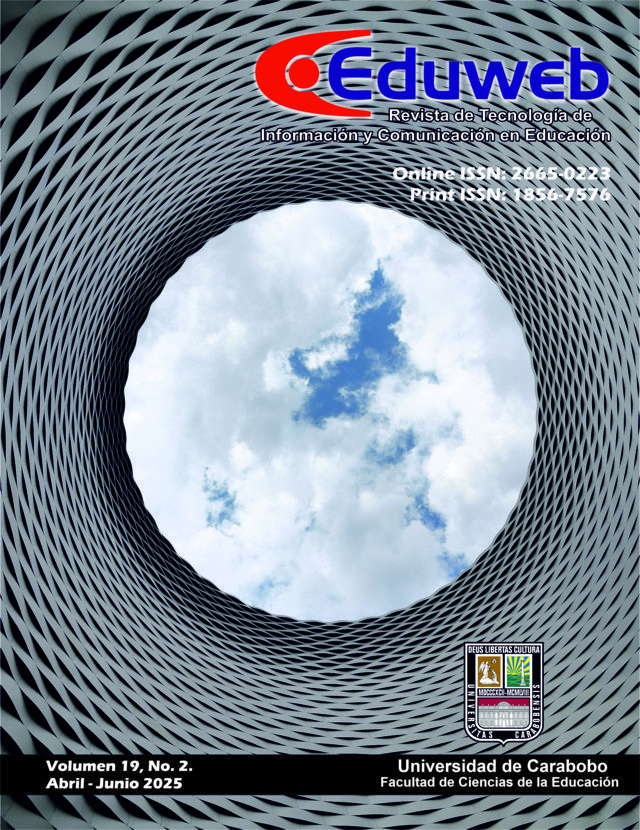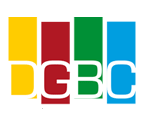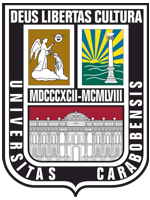Análisis de métodos de enseñanza del inglés como lengua extranjera mediante tecnologías multimedia
DOI:
https://doi.org/10.46502/issn.1856-7576/2025.19.02.5Palabras clave:
Aprendizaje interactivo, pedagogía digital, estrategias de comunicación, apoyo audiovisualResumen
Este estudio tiene como objetivo evaluar la eficacia de las tecnologías multimedia en la enseñanza del inglés como lengua extranjera. Se llevó a cabo un estudio experimental con dos grupos de estudiantes: uno de control, que siguió un enfoque tradicional, y otro experimental, que utilizó tecnologías multimedia. La duración del experimento fue de seis semanas, lo que permitió comparar los resultados de aprendizaje de ambos grupos. Los hallazgos confirmaron que el uso de herramientas multimedia mejora la competencia en lenguas extranjeras, fomenta el pensamiento creativo y fortalece las habilidades profesionales. La integración de enfoques multimedia eleva el aprendizaje a un nivel superior. Las tecnologías interactivas enriquecen los contenidos educativos, facilitan el aprendizaje autónomo y promueven la instrucción personalizada. Además, el estudio analiza métodos lingüísticos y pragmáticos que influyen en la autoeficacia académica. Los resultados indican que un enfoque de métodos mixtos respaldado por multimedia tiene un efecto positivo en la confianza de los estudiantes en su desempeño. Finalmente, la investigación resalta la importancia de mejorar los programas educativos basados en multimedia para optimizar la motivación y la conciencia sociolingüística de estudiantes y profesores, contribuyendo así a la innovación en la enseñanza del inglés como lengua extranjera.
Citas
Abdulrahaman, M. D., Faruk, N., Oloyede, A. A., Surajudeen-Bakinde, N. T., Olawoyin, L. A., Mejabi, O. V., Imam-Fulani, Y. O., Fahm, A. O., & Azeez, A. L. (2020). Multimedia tools in the teaching and learning processes: A systematic review. Heliyon, 6(11), e05312. https://doi.org/10.1016/j.heliyon.2020.e05312
Achkan, V. V., Vlasenko, K. V., Lovianova, I. V., Rovenska, O. H., Sitak, I. V., Chumak, O. O., & Semerikov, S. O. (2022). Web-based support of a higher school teacher. In S. Semerikov, V. Osadchyi, & O. Kuzminska (Eds.), Proceedings of the 1st Symposium on Advances in Educational Technology – Volume 2: AET (pp. 245–252). SciTePress. https://surl.li/nlwdsp
Afrilyasanti, R., Basthomi, Y., & Zen, E. L. (2022). Tuning up a CMLL toolbox: Analyzing web-based applications for critical media literacy learning. Interactive Technology and Smart Education, 19(4), 544–567. https://doi.org/10.1108/ITSE-07-2022-0088
Alenezi, M. (2023). Digital learning and digital institution in higher education. Education Sciences, 13(1), 88. https://doi.org/10.3390/educsci13010088
Alrikabi, H. T., Jasim, N. A., Majeed, B. H., Abass, A. Z., & ALRubee, I. R. N. (2022). Smart learning based on Moodle e-learning platform and digital skills for university students. International Journal of Recent Contributions from Engineering, Science & IT (iJES), 10(1), 109–120. https://doi.org/10.3991/ijes.v10i01.28995
Braun, V., & Clarke, V. (2006). Using thematic analysis in psychology. Qualitative Research in Psychology, 3(2), 77–101. https://doi.org/10.1191/1478088706qp063oa
Belda-Medina, J., & Calvo-Ferrer, J. R. (2022). Using chatbots as AI conversational partners in language learning. Applied Sciences, 12(17), 8427. https://doi.org/10.3390/app12178427
Damayanto, A., Bangkara, B. A., Abidin, A. Z., Heryani, A., & Maruf, I. R. (2022). Management challenges for academic improvement in higher education in the digital era. Nazhruna: Journal of Islamic Education, 5(2), 572–592. https://doi.org/10.31538/nzh.v5i2.2131
Devadze, A., & Gechbaia, B. (2024). Using virtual reality in the educational process to increase students’ motivation and interest. E-Learning Innovations Journal, 2(2), 21–35. https://doi.org/10.57125/ELIJ.2024.09.25.02
Garvasiuk, O. V., & Namestiuk, S. V. (2022). Peculiarities of teaching pathomorphology and sectional course to foreign students in terms of distance learning. Clinical and Experimental Pathology, 21(4), 84–90. https://doi.org/10.24061/1727-4338.xxi.4.82.2022.13
Griffin, A. L., Reichenbacher, T., Liao, H., Wang, W., & Cao, Y. (2024). Cognitive issues of mobile map design and use. Journal of Location Based Services, 18(4), 350–380. https://doi.org/10.1080/17489725.2024.2371288
Han, Y., & Yin, W. (2023). The effect of multimedia teaching platform based on virtual technology on students' English learning motivation. International Journal of Electrical Engineering & Education, 60(1). https://doi.org/10.1177/0020720920988495
Huang, X., Zou, D., Cheng, G., Chen, X., & Xie, H. (2023). Trends, research issues and applications of artificial intelligence in language education. Educational Technology & Society, 26(1), 112–131. https://www.jstor.org/stable/48707971
Ikwuka, O. I., Eleje, L. I., Iheanacho, E. C., & Onyebuchi, A. C. (2024). Teacher’s attitude towards the use of digital technologies for capturing students’ data in secondary schools in Imo State, Nigeria. Futurity of Social Sciences, 2(4), 39–59. https://doi.org/10.57125/FS.2024.12.20.03
Isakova, Y., Zubenko, K., Paziura, N., Olekhnovych, V., & Ostashchuk, V. (2020). A computer oriented model of blended learning of the English language. Scientific Bulletin of the National Mining University, (3), 122–130. https://doi.org/10.33271/nvngu/2020-3/122
Iyamuremye, A., Mukiza, J., Nsabayezu, E., Ukobizaba, F., & Ndihokubwayo, K. (2022). Web-based discussions in teaching and learning: Secondary school teachers’ and students’ perception and potentiality to enhance students’ performance in organic chemistry. Education and Information Technologies, 27(2), 2695–2715. https://doi.org/10.1007/s10639-021-10725-7
Jie, Z., & Sunze, Y. (2023). A mobile pedagogical framework for enhancing online teaching and learning in higher education. Interactive Learning Environments, 31(10), 6414–6427. https://doi.org/10.1080/10494820.2022.2039945
Kharroubi, S., & ElMediouni, A. (2024). Conceptual review: Cultivating learner autonomy through self-directed learning & self-regulated learning: A socio-constructivist exploration. International Journal of Language and Literary Studies, 6(2), 276–296. https://doi.org/10.36892/ijlls.v6i2.1649
Khue Dinh, P. (2025). The Dialectical Relationship Between Philosophy and Art: The Interplay of Thinking and Creativity. Futurity Philosophy, 4(1), 4–19. https://doi.org/10.57125/FP.2025.03.30.01
Kokkonen, L., Natri, T., & Moisio, J. (2022). Internationalisation as students' multilingual and intercultural competencies: Developing the whole curriculum. In A. Gonçalves, C. Tavares, J. Guerra, L. Oliveira, M. M. D. Silva, & R. Soares (Eds.), CercleS 2022: The Future of Language Education in an Increasingly Digital World: Embracing Change. Book of Abstracts (pp. 79-81). Instituto Superior de Administração e Contabilidade do Porto. http://hdl.handle.net/10400.22/20753
Lee, J. C., & Xiong, L. N. (2022). Investigation of the relationships among educational application (APP) quality, computer anxiety and student engagement. Online Information Review, 46(1), 182–203. https://doi.org/10.1108/OIR-08-2020-0348
Legemaate, M., Grol, R., Huisman, J., Oolbekkink–Marchand, H., & Nieuwenhuis, L. (2022). Enhancing a quality culture in higher education from a socio-technical systems design perspective. Quality in Higher Education, 28(3), 345–359. https://doi.org/10.1080/13538322.2021.1945524
Li, X. (2019). The application and feasibility of artificial intelligence in college English teaching. In Proceedings of the 9th International Conference on Education and Social Science (pp. 1627-1631). Francis Academic Press. DOI: 10.25236/icess.2019.312
López Córdova, J. D. (2024). Interactive online applications in the listening skill (Undergraduate thesis). Universidad Técnica de Ambato, Facultad de Ciencias Humanas y de la Educación.
Martín-Sómer, M., Casado, C., & Gómez-Pozuelo, G. (2024). Utilising interactive applications as educational tools in higher education: Perspectives from teachers and students, and an analysis of academic outcomes. Education for Chemical Engineers, 46, 1–9. https://doi.org/10.1016/j.ece.2023.10.001
Mkrttchian, V., Krevskiy, I., Bershadsky, A., Glotova, T., Gamidullaeva, L., & Vasin, S. (2019). Web-Based Learning and Development of University's Electronic Informational Educational Environment. International Journal of Web-Based Learning and Teaching Technologies, 14(1), 32–53. https://doi.org/10.4018/ijwltt.2019010103
Morozova, I., Pozharytska, O., Artemenko, Y., Bykova, T., & Ponomarenko, O. (2021). Digital discourse in the English-language fiction. AD ALTA: Journal of Interdisciplinary Research, 11(2-XXII), 87–90. https://www.magnanimitas.cz/ADALTA/110222/papers/A_15.pdf
Nicolaou, C., Matsiola, M., & Kalliris, G. (2019). Technology-enhanced learning and teaching methodologies through audiovisual media. Education Sciences, 9(3), 196. https://doi.org/10.3390/educsci9030196
Orsoni, M. (2024). Exploring the psychometric dimensions: theoretical and practical applications of artificial intelligence and gamification in education, learning, and neuropsychological assessment (Doctoral dissertation). Alma Mater Studiorum University of Bologna. https://doi.org/10.48676/unibo/amsdottorato/11482
Puebla, C., Fievet, T., Tsopanidi, M., & Clahsen, H. (2022). Mobile-assisted language learning in older adults: Chances and challenges. ReCALL, 34(2), 169–184. https://doi.org/10.1017/S0958344021000276
Saienko, Р. О. В. (2023). Information society: Educational trends and technical aspects of formation (EU experience). Journal of Higher Education Theory and Practice, 23(11). https://doi.org/10.33423/jhetp.v23i11.6232
Sherman, M., Puhovskiy, E., Kambalova, Y., & Kdyrova, I. (2022). The future of distance education in war or the education of the future (the Ukrainian case study). Futurity Education, 2(3), 15–24. https://doi.org/10.57125/FED/2022.10.11.30
Turchyn, I., Zaitseva, S., Rudenko, N., Saienko, V., Kuzemko, N., & Denefil, O. (2023). Using distance learning models as opportunities for blended learning for foreigners. Romanian Journal for Multidimensional Education, 15(4), 178–191. https://doi.org/10.18662/rrem/15.4/787
Vedadi, S., Abdullah, Z. B., & Cheok, A. D. (2019). The effects of multi-sensory augmented reality on students’ motivation in English language learning. 2019 IEEE Global Engineering Education Conference (EDUCON), 1079–1086. https://doi.org/10.1109/EDUCON.2019.8725096
Xu, S., Li, X., & Yang, X. (2021). Multilateral interactive teaching model for improving foreign language learners’ autonomous learning ability by using multimedia network technology. The International Journal of Electrical Engineering & Education, 002072092098607. https://doi.org/10.1177/0020720920986077
Yemelyanova, D., Tadeush, O., Dushechkina, N., Masliuk, K., Malyshevskyi, O., & Demchenko, I. (2022). Formation of professional self-determination of future teachers of non-language specialties when learning the English language. Romanian Journal for Multidimensional Education, 14(1), 305–321. https://doi.org/10.18662/rrem/14.1/520
Yuhan, N., Osipchuk, H., Siroshtan, T., Prykhodko, V., & Mytiay, Z. (2024). Synergy of philological disciplines: Combining the vectors of linguistics and literary studies in the context of modern science. Synesis, 16(2), 19–32. Recuperado de https://seer.ucp.br/seer/index.php/synesis/article/view/3030
Descargas
Publicado
Cómo citar
Número
Sección
Licencia
Derechos de autor 2025 Oksana Boiko, Volha Hurskaya, Tetiana Moroz, Tetiana V. Tron, Valentyna Kozak

Esta obra está bajo una licencia internacional Creative Commons Atribución 4.0.















